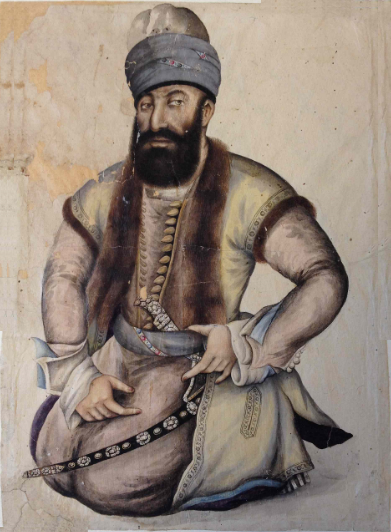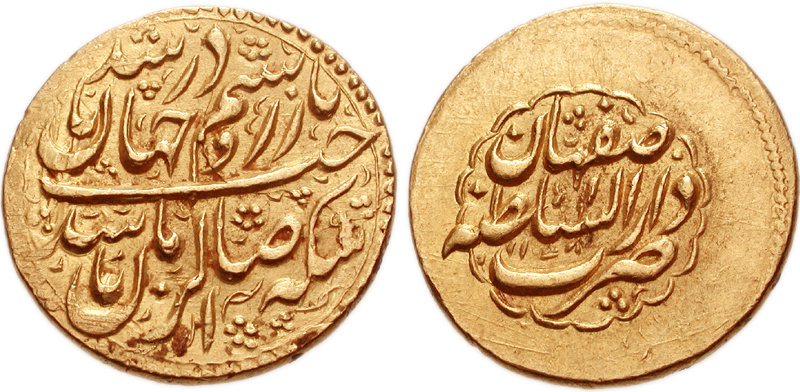|
Pars Museum
The Pars Museum ( Persian: موزه پارس) is a museum in Shiraz, Fars Province, southern Iran. Founded in 1936 under Reza Shah Pahlavi, it is located in Nazar Garden. The octagonal building was the place in which royal guests were hosted during the Zand dynasty of Iran. It was also used for holding official ceremonies. It is also the burial place of Karim Khan Zand. Nazar Garden The old Nazar Garden was one of the largest gardens of Shiraz during the Safavid rule (1501–1722). During Zand dynasty (1750–1794) Karim Khan built an octagon structure which was called Kolah Farangi. It was used to receive and entertain foreign guests and ambassadors and hold official ceremonies.Pars Museum, KolahFarangi Mansion. M. Rostami (), p. 9 Pars Museum In 1936 the pavilion became a museum. It was the first museum which was located outside the capital city of Tehran Tehran (; fa, تهران ) is the largest city in Tehran Province and the Capital city, capital of Iran. With ... [...More Info...] [...Related Items...] OR: [Wikipedia] [Google] [Baidu] |
Museums In Iran ...
This is a list of museums in Iran. See also * Tourism in Iran * History of Iran * Culture of Iran * List of museums * List of museums in Tehran References {{Asia topic, List of museums in Museums Museums Iran Museums Iran Iran, officially the Islamic Republic of Iran, and also called Persia, is a country located in Western Asia. It is bordered by Iraq and Turkey to the west, by Azerbaijan and Armenia to the northwest, by the Caspian Sea and Turkm ... [...More Info...] [...Related Items...] OR: [Wikipedia] [Google] [Baidu] |
Persian Language
Persian (), also known by its endonym and exonym, endonym Farsi (, ', ), is a Western Iranian languages, Western Iranian language belonging to the Iranian languages, Iranian branch of the Indo-Iranian languages, Indo-Iranian subdivision of the Indo-European languages. Persian is a pluricentric language predominantly spoken and used officially within Iran, Afghanistan, and Tajikistan in three mutual intelligibility, mutually intelligible standard language, standard varieties, namely Iranian Persian (officially known as ''Persian''), Dari, Dari Persian (officially known as ''Dari'' since 1964) and Tajik language, Tajiki Persian (officially known as ''Tajik'' since 1999).Siddikzoda, S. "Tajik Language: Farsi or not Farsi?" in ''Media Insight Central Asia #27'', August 2002. It is also spoken natively in the Tajik variety by a significant population within Uzbekistan, as well as within other regions with a Persianate society, Persianate history in the cultural sphere of Greater Ira ... [...More Info...] [...Related Items...] OR: [Wikipedia] [Google] [Baidu] |
Shiraz
Shiraz (; fa, شیراز, Širâz ) is the fifth-most-populous city of Iran and the capital of Fars Province, which has been historically known as Pars () and Persis. As of the 2016 national census, the population of the city was 1,565,572 people, and its built-up area with Sadra was home to almost 1,800,000 inhabitants. A census in 2021 showed an increase in the city's population to 1,995,500 people. Shiraz is located in southwestern Iran on the () seasonal river. Founded in the early Islamic period, the city has a moderate climate and has been a regional trade center for over a thousand years. The earliest reference to the city, as ''Tiraziš'', is on Elamite clay tablets dated to 2000 BCE. The modern city was restored or founded by the Arab Umayyad Caliphate in 693 CE and grew prominent under the successive Iranian Saffarid and Buyid dynasties in the 9th and 10th–11th centuries, respectively. In the 13th century, Shiraz became a leading center of the arts and le ... [...More Info...] [...Related Items...] OR: [Wikipedia] [Google] [Baidu] |
Iran
Iran, officially the Islamic Republic of Iran, and also called Persia, is a country located in Western Asia. It is bordered by Iraq and Turkey to the west, by Azerbaijan and Armenia to the northwest, by the Caspian Sea and Turkmenistan to the north, by Afghanistan and Pakistan to the east, and by the Gulf of Oman and the Persian Gulf to the south. It covers an area of , making it the 17th-largest country. Iran has a population of 86 million, making it the 17th-most populous country in the world, and the second-largest in the Middle East. Its largest cities, in descending order, are the capital Tehran, Mashhad, Isfahan, Karaj, Shiraz, and Tabriz. The country is home to one of the world's oldest civilizations, beginning with the formation of the Elamite kingdoms in the fourth millennium BC. It was first unified by the Medes, an ancient Iranian people, in the seventh century BC, and reached its territorial height in the sixth century BC, when Cyrus the Gr ... [...More Info...] [...Related Items...] OR: [Wikipedia] [Google] [Baidu] |
Reza Shah Pahlavi
, , spouse = Maryam Savadkoohi Tadj ol-Molouk Ayromlu (queen consort) Turan Amirsoleimani Esmat Dowlatshahi , issue = Princess Hamdamsaltaneh Princess ShamsMohammad Reza ShahPrincess Ashraf Prince Ali Reza Prince Gholam Reza Prince Abdul Reza Prince Ahmad Reza Prince Mahmoud Reza Princess Fatemeh Prince Hamid Reza , house = Pahlavi , father = Abbas-Ali Khan , mother = Noush-Afarin , religion = , birth_date = , birth_place = Alasht, Savadkuh, Mazandaran, Sublime State of Persia , death_date = , death_place = Johannesburg, Union of South Africa , burial_place = 7 May 1950 Mausoleum of Reza Shah, Shah Abdol-Azim Shrine, Rey , signature = , module = Reza Shah Pahlavi ( fa, رضا شاه پهلوی; ; originally Reza Khan (); 15 March 1878 – 26 July 1944) was an Iranian military officer, politician (who served as minister of war and prime minister), and first shah of the House of Pahlavi of the Imperial St ... [...More Info...] [...Related Items...] OR: [Wikipedia] [Google] [Baidu] |
Zand Dynasty
The Zand dynasty ( fa, سلسله زندیه, ') was an Iranian dynasty, founded by Karim Khan Zand (1751–1779) that initially ruled southern and central Iran in the 18th century. It later quickly came to expand to include much of the rest of contemporary Iran (except for the provinces of Balochistan and Khorasan) as well as parts of Iraq. The lands of present-day Armenia, Azerbaijan, and Georgia were controlled by khanates which were de jure part of the Zand realm, but the region was de facto autonomous. The island of Bahrain was also held for the Zands by the autonomous Al-Mazkur sheikhdom of Bushire. The reign of its most important ruler, Karim Khan, was marked by prosperity and peace. With its capital at Shiraz, arts and architecture flourished under Karim Khan's reign, with some themes in architecture being revived from the nearby sites of the Achaemenid (550–330 BC) and Sasanian (224–651 AD) era's of pre-Islamic Iran. The tombs of the medieval Persian poets H ... [...More Info...] [...Related Items...] OR: [Wikipedia] [Google] [Baidu] |
Karim Khan Zand
Mohammad Karim Khan Zand ( fa, محمدکریم خان زند, Mohammad Karīm Khân-e Zand; ) was the founder of the Zand Dynasty, ruling from 1751 to 1779. He ruled all of Iran (Persia) except for Khorasan. He also ruled over some of the Caucasian lands and occupied Basra for some years. While Karim was ruler, Iran recovered from the devastation of 40 years of war, providing the war-ravaged country with a renewed sense of tranquillity, security, peace, and prosperity. The years from 1765 to Karim Khan's death in 1779, marked the zenith of Zand rule. During his reign, relations with Britain were restored, and he allowed the East India Company to have a trading post in southern Iran. He made Shiraz his capital and ordered the construction of several architectural projects there. As noted by '' The Oxford Dictionary of Islam'', "Karim Khan Zand holds an enduring reputation as the most humane Iranian ruler of the Islamic era". When following the Islamic Revolution of 1979, the na ... [...More Info...] [...Related Items...] OR: [Wikipedia] [Google] [Baidu] |
Safavid
Safavid Iran or Safavid Persia (), also referred to as the Safavid Empire, '. was one of the greatest Iranian empires after the 7th-century Muslim conquest of Persia, which was ruled from 1501 to 1736 by the Safavid dynasty. It is often considered the beginning of modern Iranian history, as well as one of the gunpowder empires. The Safavid Shāh Ismā'īl I established the Twelver denomination of Shīʿa Islam as the official religion of the empire, marking one of the most important turning points in the history of Islam. An Iranian dynasty rooted in the Sufi Safavid order founded by Kurdish sheikhs, it heavily intermarried with Turkoman, Georgian, Circassian, and Pontic GreekAnthony Bryer. "Greeks and Türkmens: The Pontic Exception", ''Dumbarton Oaks Papers, Vol. 29'' (1975), Appendix II "Genealogy of the Muslim Marriages of the Princesses of Trebizond" dignitaries and was Turkish-speaking and Turkified. From their base in Ardabil, the Safavids established control ... [...More Info...] [...Related Items...] OR: [Wikipedia] [Google] [Baidu] |
Karim Khan
Mohammad Karim Khan Zand ( fa, محمدکریم خان زند, Mohammad Karīm Khân-e Zand; ) was the founder of the Zand Dynasty, ruling from 1751 to 1779. He ruled all of Iran (Persia) except for Khorasan. He also ruled over some of the Caucasian lands and occupied Basra for some years. While Karim was ruler, Iran recovered from the devastation of 40 years of war, providing the war-ravaged country with a renewed sense of tranquillity, security, peace, and prosperity. The years from 1765 to Karim Khan's death in 1779, marked the zenith of Zand rule. During his reign, relations with Britain were restored, and he allowed the East India Company to have a trading post in southern Iran. He made Shiraz his capital and ordered the construction of several architectural projects there. As noted by ''The Oxford Dictionary of Islam'', "Karim Khan Zand holds an enduring reputation as the most humane Iranian ruler of the Islamic era". When following the Islamic Revolution of 1979, the nam ... [...More Info...] [...Related Items...] OR: [Wikipedia] [Google] [Baidu] |
Tehran
Tehran (; fa, تهران ) is the largest city in Tehran Province and the Capital city, capital of Iran. With a population of around 9 million in the city and around 16 million in the larger metropolitan area of Greater Tehran, Tehran is the List of largest cities of Iran, most populous city in Iran and Western Asia, and has the Largest metropolitan areas of the Middle East, second-largest metropolitan area in the Middle East, after Cairo. It is ranked 24th in the world by metropolitan area population. In the Classical antiquity, Classical era, part of the territory of present-day Tehran was occupied by Ray, Iran, Rhages, a prominent Medes, Median city destroyed in the medieval Muslim conquest of Persia, Arab, Oghuz Turks, Turkic, and Mongol conquest of Khwarezmia, Mongol invasions. Modern Ray is an urban area absorbed into the metropolitan area of Greater Tehran. Tehran was first chosen as the capital of Iran by Agha Mohammad Khan Qajar, Agha Mohammad Khan of the Qajar dyn ... [...More Info...] [...Related Items...] OR: [Wikipedia] [Google] [Baidu] |




